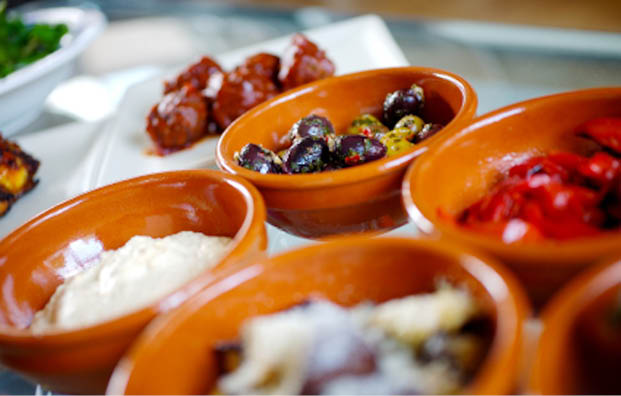The origin of tapas is the subject of many an argument in the local bar. Usually these stories are full of legends and myths. Still, here are some of them. –
- It is said that the first tapa was simply a hunk of bread which was placed over the glass to keep the flies out. Hence the word ‘tapas’ was born. Tapa literally meaning ‘cover’ or ‘lid’.
- Another famous theory is the one that relates to King Alfonso X. Because of a disease the doctors recommended that he regularly sip some wine. In order to prevent the effects of alcohol, he used to eat small appetizers. Once he was healed, he decided that all taverns in Castile should serve some food with each glass of wine.
- There were many road accidents during the reign of the Catholic Monarchs because cart drivers used to drink a lot. As a consequence, the Monarchs ordered to serve the glass of wine or the beer jar with a lid (tapa in Spanish) as well as some cold food such as cheese or jamon. The drivers were forbidden to remove the lid until they had finished eating the food.
- Later on, during the 16th century the word tapa (an evolution of the French tape, meaning leg or stage) was used to describe the moment when soldiers used to stop, have some rest and eat. These stops were frequent when troops had to travel for longer than a day. So tapear (which currently means going from bar to bar having tapas in each one) was going from one supply spot to another.
- In the 17th century the private clubs of the Sevillian bourgeoisie used to order wine and other drinks from the surrounding grocery stores. The owners used to cover (tapar) the glasses with some embutido so that dust would not go into the glass.
- It’s quite probable that the history of tapas dates from after the Civil War (early 20th century) when the scarcity of food forced people to eat small dishes to survive.
- Others believe that as bars emerged, bartenders offered salty snacks as a courtesy to clients who would then become thirsty and order new drinks.
In the beginning somewhere must have been the olive – plain and simple, on its own. What better accompaniment to a glass of dry fino sherry?
Or perhaps some almonds; fried in olive oil, sprinkled with salt and served while they’re still hot? These are the original tapas; the simplest of foods, requiring little or no preparation.
As the tradition developed, tapas became more of an elaborate event, with each region developing their own specialities. They were still ‘little dishes’ but the personalities of thousands of bar owners all over Spain has stamped them with the identities that they have today.
Spain’s landscape is extremely diverse and covers areas such as mountain ranges and dusty plains, olive and fruit groves plus fertile orchards and rich arable lands.
Spain also has climate extremes. Regions that are cold and wet, regions that are hot and dry, and just about everything in between. It has a huge coastline, facing both the Atlantic ocean and the Mediterranean sea.
Spain’s fishing industry is one of the most active, and pro-active, in Europe. Hardly surprising then, that the cuisine of its coastal regions is very heavily based on fish and seafood.
A brief history.
Age-old regional methods and local ingredients have been influenced throughout the country’s long history by the incorporation of many ingredients and influences from different cultures and countries.
The east coast was invaded by the Romans, who introduced the olive and irrigation methods.
The invasion of the Moors also brought olives to the south, as well as almonds, citrus fruits and fragrant spices. The influences of their 700 year occupation remain today, especially in Andalucia.
The discovery of the New World brought with it the introduction of tomatoes, sweet peppers (capiscums), chilli peppers, beans and potatoes. These were readily accepted and easily grown in Spain’s ideal micro-climates.
Spanish food, and especially tapas, is based on simple methods and the imaginative use of seasonal vegetables and local ingredients. Tapas is essentially hearty and unpretentious. Ingredients are fresh, flavours are robust and recipes are easy. Preparation and presentation is generally pretty straightforward.
You’ll find no ‘pan-fried’ this and ‘sun-blushed’ that here, my friend. The success of a dish is purely down to one basic rule: whether or not it tastes good.
Which, I hope you agree, is how it should be.


